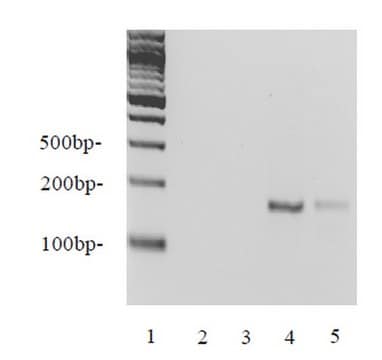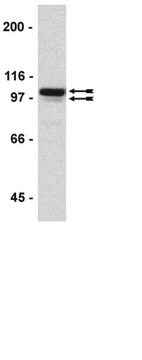17-371
EZ-ChIP
Synonym(s):
Chromatin Immunoprecipitation Kit
About This Item
Recommended Products
description
22 individual chromatin immunoprecipitation (ChIP) reactions using inexpensive protein G agarose beads
Quality Level
packaging
kit of 22 assay(s)
technique(s)
immunoprecipitation (IP): suitable
General description
Chromatin Immunoprecipitation (ChIP) is a powerful technique for mapping the in vivo distribution of proteins associated with chromosomal DNA. These proteins can be histone subunits and post-translational modifications or other chromatin associated proteins such as transcription factors, chromatin regulators, etc. Additionally, ChIP can be used to identify regions of the genome associated with these proteins, or conversely, to identify proteins associated with a particular region of the genome. ChIP methodology often involves protein-DNA and protein-protein cross-linking, fragmentation of the cross-linked chromatin, and subsequent immunoprecipitation of chromatin with an antibody specific to a target protein. The DNA fragments isolated in complex with the target protein can be identified by a variety of methods including PCR, DNA microarray and DNA sequencing. Standard or quantitative PCR can be performed to verify whether a particular DNA sequence (the gene or region of the genome) is associated with the protein of interest. The combination of ChIP and promoter or genomic tiling microarrays (ChIP-chip) allows genome-wide identification of DNA-binding sites for chromatin-associated proteins with precise resolution. Alternatively, high-throughput sequencing of libraries constructed from immunoprecipitated chromosomal DNA (ChIP-Seq) is a powerful alternative to ChIP-chip in mapping the protein-DNA interactions across mammalian genomes.
Features and Benefits
- Easier: Spin columns make DNA purification easier and more reliable - no more messy phenol-chloroform extractions.
- Quicker: All reagents to process your samples are included - you don′t have to spend valuable time making them.
- Greater Reproducibility: Positive and negative control antibodies and PCR primers are included to help validate your results and to troubleshoot your experiments.
Packaging
Components
- DNA Purification Spin Columns and Collection Tubes
- ChIP Blocked Protein G Agarose
- Anti-RNA Polymerase II
- Control PCR Primers
- Normal Mouse IgG
- Bind, Wash and Elution Reagents
- Protease Inhibitor Cocktail II
- RNase A
- Proteinase K
- All required buffers
- ChIP Dilution Buffer
- Low Salt Immune Complex Wash Buffer
- High Salt Immune Complex Wash Buffer
- LiCl Immune Complex Wash Buffer
- TE Buffer
- 0.5M EDTA
- 5M NaCl
- SDS Lysis Buffer
- 1M Tris-HCl, pH 6.5
- 10X PBS
- 10X Glycine
- 1M NaHCO3
- Control Primers
- 20% SDS
- Spin Filters
- Collection Tubes
- Bind Reagent A
- Wash Reagent B
- Elution Reagent C
Storage and Stability
Disclaimer
Signal Word
Danger
Hazard Statements
Precautionary Statements
Hazard Classifications
Acute Tox. 4 Oral - Aquatic Chronic 3 - Eye Dam. 1 - Flam. Liq. 2 - Resp. Sens. 1 - Skin Irrit. 2
Storage Class Code
3 - Flammable liquids
WGK
WGK 2
Flash Point(F)
55.4 °F
Flash Point(C)
13 °C
Certificates of Analysis (COA)
Search for Certificates of Analysis (COA) by entering the products Lot/Batch Number. Lot and Batch Numbers can be found on a product’s label following the words ‘Lot’ or ‘Batch’.
Already Own This Product?
Find documentation for the products that you have recently purchased in the Document Library.
Our team of scientists has experience in all areas of research including Life Science, Material Science, Chemical Synthesis, Chromatography, Analytical and many others.
Contact Technical Service












